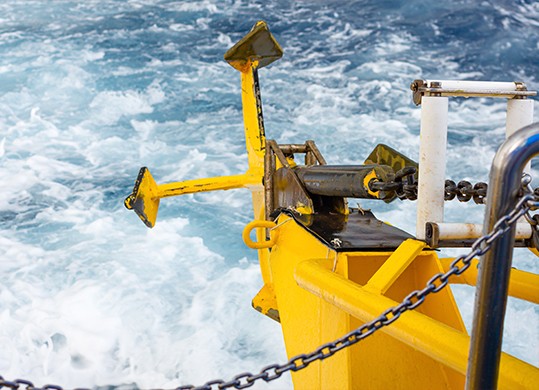Vessels continue to be pushed further off the proforma schedule causing blank sailings, and the continuous increase of import volume within the past two years has affected operations in almost all areas of the country, creating delays.
Outlook for this year shows the increase of import volumes through the summer, caused by the increasing demand of products driven by expected rising prices, situation that may worsen congestion and storage capacity.
Recent lockdowns in Chinese cities due to Covid-19 have caused additional delays on the international supply chain, especially with warehouses and depots shut down and partial and limited operations of trucking at the port of Shanghai. Blank sailings for Shanghai during the next couple of weeks, as well as hazardous booking restrictions from carriers, will severely impact our service. The number of container vessels stuck at the port of Shanghai have constantly increased over the past month. In addition, other ports in China are starting to experience congestion due to vessels looking for alternative ports to dock. Consequences of this backlog could last into the summer.
The current situation in Ukraine is impacting vessel routing, schedules, ports and rails especially in Eastern Europe, aggravating delays.
The situation of severely congested ports in New Zealand is affecting vessel routings and schedules from US West Coast.
With all of the recently mentioned events, there is a high number of container vessels currently congested at different ports around the world affecting logistics services overall.
Container availability in the USA is tight in the areas of South Atlantic Coast and Gulf Coast.
Terminals Updates:
Due to increased volume and labor shortage, most terminals are experiencing congestion issues, including Los Angeles/Long Beach, Savannah, Charleston, Miami, Houston, and Seattle.
Each month, high cargo volumes continue to enter the U.S., with most North American ports facing berthing congestion.
U.S. East Coast:
New York/New Jersey: Vessel wait time up to 10 days due to high import volume and severe port congestion.
Norfolk: Vessel waiting time is up to 3 days due to high import volume and berth congestion.
Charleston: Vessel wait time is up to 2 days due to labor shortage, high import volume, reduction of yard space, and terminal system upgrade.
Savannah: Vessel wait time is up to 4 days due to high import volume and terminal system upgrade issues.
Miami: Vessel wait time is up to 3 days due to high import volume.
U.S. West Coast:
Long Beach: Vessel waiting time is up to 16 days due to high import dwell and labor shortages.
Los Angeles: Vessel waiting time is up to 17 days due to yard congestion, high import dwell, and labor shortages.
Seattle: 2-day vessel wait time due to high import volume and labor shortages. Containers can sit for up to 5 weeks in a closed area at the terminal, depending on the congestion at each terminal, until truckers can pick them up. All operations are delayed about a month, and transit times are much longer than in previous weeks due to blank sailings and vessel delays at the port, pushing other vessel further back.
Oakland: up to 7 days of waiting time for containers from Asia and 10 days from Germany due to high import volume, labor shortages, and one berth down. 90% of yard capacity is being used. Ships looking to berth in Oakland will now wait offshore, which will delay operations. The backlog is caused mainly due to a massive number of empty containers in terminals waiting to be returned to Asia.
U.S. Gulf Coast:
Houston: Waiting time is up to 8 days due to high import volume, labor shortages, and port congestion.
Rail Terminal Updates:
NS: Norfolk Southern Rail has suspended services to Jacksonville from all origins until further notice. This restriction will impact our bookings moving from Chicago to Santos and Buenos Aires as the routing is via Jacksonville.
BNSF & UP/LAX/LGB: There is severe congestion. Limited gate capacity, restrictions, rail car shortages, and limited reservations continue, causing increased delays on import rail units. There is limited allocation currently. In Los Angeles, containers wait an average of almost 16 days before being picked up.
Chicago Rail Ramp: The rail facilities in Chicago are experiencing severe congestion due to dwelling containers and chassis shortages. There are gate restrictions and lane suspensions, causing extended delays in pick-ups and deliveries. The rails continue to monitor in-gates with allocation or reservations.
CSX Bedford Park: Limiting reservations for in gate to rail.
NY/NJ: Chassis shortage includes rail ramps due to the high increase in import volume.
Philadelphia: Severe chassis shortages in the Philadelphia area. Extended delays in pick-ups, deliveries, and drayage.
Charleston: Lack of chassis causing extended delays in pick-ups, deliveries, and drayage over to rail facilities.
Savannah: Continued congestion and delays at the local ramps. Shortage of chassis and equipment continues to affect operations.
Jacksonville and Miami: The shortage of equipment in Florida has carriers struggling to keep the service due to a slower turnover of import containers coming into the area. Most loads have been delayed an average of one to two weeks. Equipment shortages are resulting in pick-up delays.
Seattle: Congestion due to increased dwell for Import rail cargo. Up to 10 days delay for cargo going to Chicago. Most truckers are booked 2 weeks or more in advance with limited trucker capacity. Local terminals are extremely congested, all import containers are moved to a closed area for about 6 weeks. Transit time from Japan which is the closest port to the Pacific Northwest is around 62 days.
Houston/Dallas: There is a severe chassis shortage and ongoing congestion in the area. Finding truckers has become a challenge as they are booked for 2-3 weeks in advance.
Chassis issues are challenging in all regions in the U.S. This is due to the division of the intermodal system, the severity of the Covid 19 pandemic, and the lack of additional capacity at different levels of the supply chain.
Source: Shipco Transport Inc.

